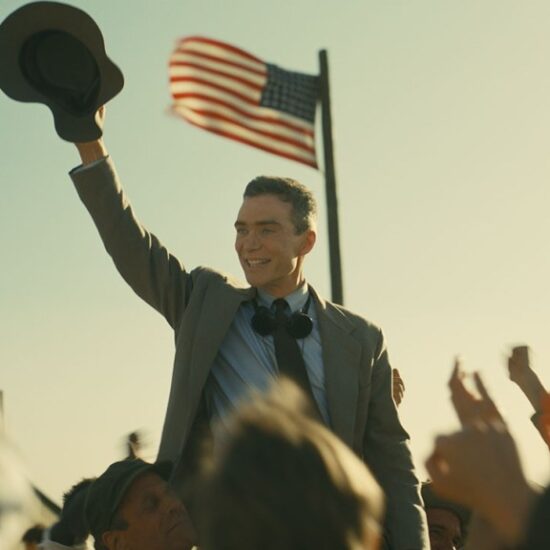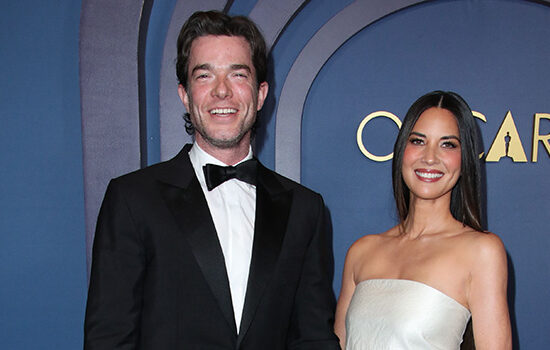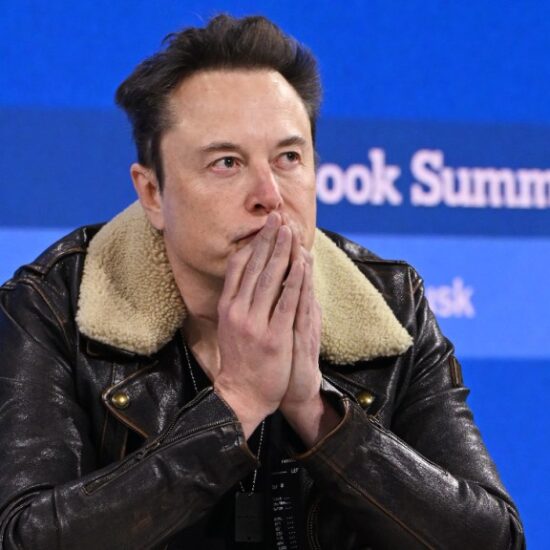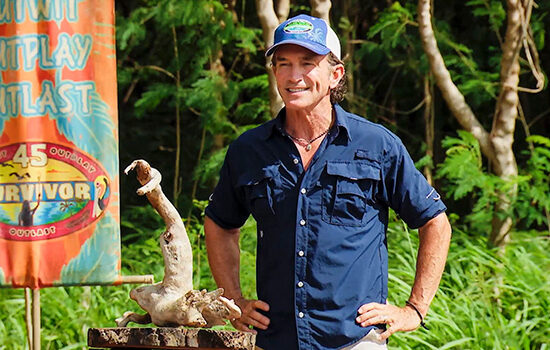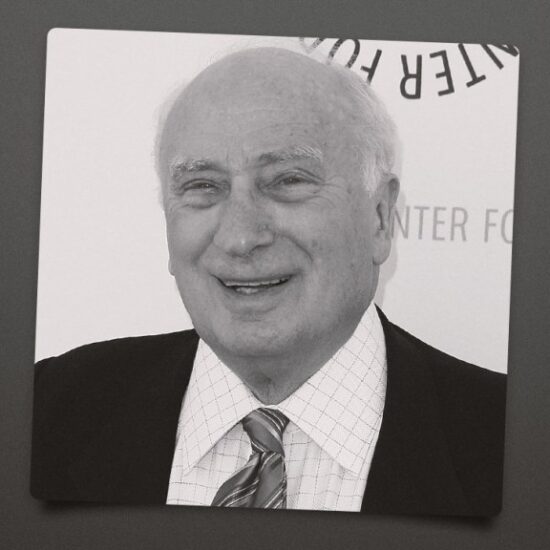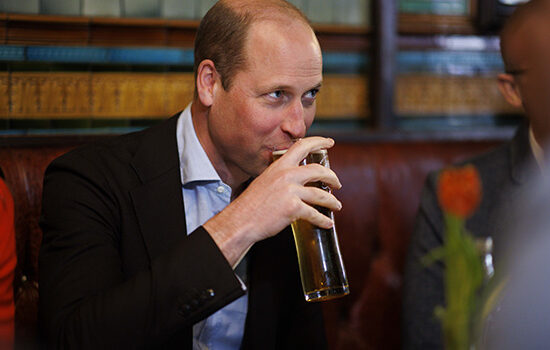
Netflix’s reboot of Australian YA drama Heartbreak High has become one of the streamer’s biggest surprise hits of late 2022. The first season of the show has struck a chord with young viewers around the globe, ranking in Netflix’s global top 10 list for English TV every week since its release on Sept. 14.
The original series ran for seven seasons in the 1990s and was eventually broadcast in over 70 countries, including the U.K., U.S., Germany, Argentina, Mexico, India and Indonesia. But Netflix’s new, re-imagined version has become a viral phenomenon virtually overnight, with react videos and character fan edits on TikTok racking up hundreds of millions of views around the globe.
Set in fictional Hartley High, the reboot follows a web of overlapping high-school relationships — friendships, frenemies, couples and crushes — which all face the test after the revelation of an “incest map” chalked onto a school wall, exposing the various sexual relationships among the students. Like its predecessor, the show has won plaudits and fans for its fun but sensitive portrayal of a diverse range of teen stresses and aspirations, including characters of a broad range of ethnic, gender and neurological identities.
The Hollywood Reporter spoke with Heartbreak High‘s producer Carly Heaton, a veteran of the Australian TV industry, about the reboot’s creation and what the show’s global success means for screen diversity down under.
What did the original Heartbreak High mean to you and what kind of influence did it have in Australia in its day?
Yeah, so it was on in the ’90s when I was in high school and it was just pretty revolutionary for its time. Storyline-wise, it went where other shows in Australia didn’t go at that time. The kids were more brash and loud-mouthed and just more Aussie. There weren’t always neat endings. And the biggest thing was that it was so much more representative of what Australian youth actually looked like, rather than the glossy, blue-eyed blonde-haired versions we tend to get coming out of this country. Obviously, I’m of an Anglo background, but I grew up in public school and all of my friends didn’t look like that. My friends looked like what you saw on Heartbreak High. It also had a very big class aspect to it. We very rarely saw shows that had working- to middle-class kids in it. It had always been this aspirational thing where you featured sort of richer kids, and the audience was sort of peering into their world. Heartbreak High had single parents and it felt real because a lot of people were struggling. And then there was always a little love, which just pulled you in as a teen. But most importantly, you could recognize yourself and I think that’s why it became so immensely popular, with seven seasons — back when they were doing soap seasons of like 50 episodes.
So how did you end up bringing it back?
Well, a few years ago we started developing ideas for a high school show and eventually someone put forward the idea, “Why wouldn’t we just do the original?” And at that point, we found out that some Dutch guys had the rights. Because the first series was so popular around the world — it was really big in the U.K., France, Belgium, and other European countries — these guys were so fanatical about it that they traced down the rights from Australia and bought them. So we partnered with them to make it.
What were your priorities when you started developing the update and what did you do to ensure that it was authentic to contemporary Australian teenage life?
Well, we like to talk about this one more as a reimagining because we didn’t take any of the storylines from the original. There are a few heritage cast members that you see pop up, but more as Easter eggs for people. We did a few little various things like that, such as the way we shot a particular scene to mimicked moments from the original — particularly the opening sequence. But again, more as Easter eggs. What we really wanted to keep was the essence, and we knew that to do that, it had to be representative of what Australian youth actually looks like today. And it would have to be funny and brash, which was what the original did so well. And it’s just very Australian, but we didn’t want to dumb down any of our slang or the way kids vocalize things today. We also wanted it to be really hopeful.
Why was that hopeful note important?
Okay, I’ll tell you in a moment… But first, obviously, you can see that I’m not 18 years old or 23 years old. We looked at our writing team, and we made sure that many of them were quite young. Some are in their 30s now, but they were in their 20s when we were getting started. I think our youngest writer was 23. So a lot of emerging writers came through — which obviously takes a bit more care and time to get that right and support them in the way that’s needed — but it was vital. We did that with our production team as well. And then we actually went out to focus groups and we spent a few weeks with teenagers from all walks of life in Sydney. And we just walked through their lives with them — what they love, what they hate, what they’re feeling. And a lot of us on the team have younger siblings. I’ve got siblings 15 years younger than me. So we had a good basis to launch from, and actually found was, a lot of them are lacking a bit of hope. Because there are so many painful and challenging issues in the air. You know, like what is the answer to climate change and what’s becoming of the natural world? So, it was like, what’s our job as storytellers here? We actually need to provide some hope. We can’t shy away from the truth, but we can’t just be nihilistic while we’re being entertaining and fun either. So we certainly didn’t shy away from things — we hit some really big issues and stories — but we wanted to make sure kids come out of it feeling like there’s a way forward.
Netflix
So, as you mentioned, it is immediately striking as the show’s characters are being introduced how wonderfully diverse the cast and the storytelling is. How revolutionary or not is that within the current Australian industry landscape? How far along, or not, in your view, is the Australia in the process of improving representational diversity on TV?
Well, I think there’s been a big drive toward representation, and I’m not claiming we’re the first people to do this. But I think the fact that we are a YA show allows us to be a bit broader in a way that’s even more in synch with how the industry has been pushing hard to become more representative. For the past 15 years, this is something we’ve been working on, but the more representative stories you would see were often quite niche. You didn’t have the broad scope that we do with a YA high school show, which allows you to look at so many different groups and subcultures. You have the ability to be quite broad there, whereas a lot of other Australian shows might have explored an underrepresented cultural subset, but the storylines were more niche. So I think this actually was the first show in a long time that had the capacity to be representative in a much broader and comprehensive way. And high school is an age where you’re playing with your identity, so that gave us a lot of exciting opportunities as well.
The high school genre has been around for a very long time, but there have been a number of breakthrough series recently — Sex Education, Euphoria, etc — that are more frank in the way they engage with the realities of teenage life than the genre has ever been before — whether it’s sex, drug use or other issues. Do you see Heartbreak High as a response, or in dialog with some of those other shows in any way?
Yeah, I definitely think we’re sitting in that canon. And I think that frankness is mostly a consequence of a changed TV landscape, with the advent of streamers and time slots disappearing, which has mixed up what you can show and what the limitations are. Now, you can be a bit more open and frank with it all. It’s also got to do with how viewers’ tastes and expectations have evolved. I was having a discussion with my sister-in-law yesterday about whether or not my 14-year-old nephew should watch our show, and then my brother popped in the background and said, “Well, you let him watch the first episode of Dahmer.” (Laughs) I’m not really sure that answers your question, but I think all viewers, including young adults, want and expect authenticity nowadays. You can’t get away with glossing over things the way shows might have in the past. The audience will smell it.
Did you ever consider subtitling some of the Australian teenage slang for non-Australian viewers? You can usually work it out from context, but I have to admit, as an American who is very much not a member of Gen-Z, there were quite a few times where I was like, I have no idea what that means.
(Laughs) We did have a Netflix exec from the U.S. on board — I think she grew up in the Midwest — and she was one of our writers’ notes calls, and she was like, “I have no idea what any of you are talking about.” So I did think we might get subtitled for the U.S. and other markets in some spots. But in the end we weren’t. There has been some great TikTok stuff that’s come up, where people show all of the slang and what it actually means. But also, viewers are smart. You can get it from context.
So, although the show is extremely frank about the realities and nuances of teen sexual activity, I understand that there was also a priority in the writers’ room to include storylines that show that not all kids are necessarily sexually active. I found that interesting, since it kind of cuts against the grain of what people expect from these more graphic new high school shows. It also seems realistic, in light of some of the recent research that has emerged showing how Gen Z is actually the least sexually active generation to date.
Yeah, you know we all do a lot of solo research and we’re always sharing stuff, and there were a lot of articles that went around on that topic. You know, young people today are such a porn-saturated generation, and that brings all of these expectations of what they should be doing and shouldn’t be doing. I think it overwhelms them to a certain degree and a lot simply choose not to participate. We’ve been researching that recently — about people opting out altogether, or waiting. I think it’s a cultural thing as well. We found that in a lot of European countries, sex is so easily spoken about. And you can see kids speak about it with their parents. So they feel that their first experience should be done in a genuine, loving, supportive way. So having these points of view was also very important. We wanted to show the full spectrum, and all of the different points of view.
So, I hate to even ask this next question, but I’m just curious… Coming from the U.S. context, I can’t help but wonder if there has been any kind of anti-woke backlash or reaction to the show. Social media being what it is…
You know, we were expecting it. We were prepared. But there hasn’t been, which has been absolutely remarkable. I think we can put that down to the fact that, yes, these characters represent particular facets of society that may be contentious to certain generations or people, but it’s always only one tiny little bit of their character. We might have a non-binary character or queer characters, but that’s just a part of their character and how they walk through the world, it’s not what their storylines are about. So I think that’s a real difference — we really were just pushing to capture the full texture of humanity really.
That seems like a testament to the fact that you weren’t indulging in tokenism of any kind.
Yeah, it’s just being celebrated. And there’s been no takedowns yet — fingers crossed.
That’s fantastic. So, yeah, what has the hugely positive global response been like for you and your team?
Absolutely overwhelming, actually. I had to step away from the internet for a few days, because there was just so much coming in — particularly locally. But it’s all been phenomenal. We had a great critical response, which we were really happy about. But I’ve always got this fear in the back of my mind: “critical success, commercial failure.” (Laughs) So after we got some good reviews, I still sort of kept quietly to myself, but then it just totally took off on Netflix. This is the first time an Australian scripted show has had the ability to go out on a platform globally like this. Netflix kept warning us, but I don’t think we were prepared for what that would be like. You know, kids finding my number and email and hitting me up with calls to tell me how much they love it. It’s been absolutely overwhelming — in the most delightful of ways.









